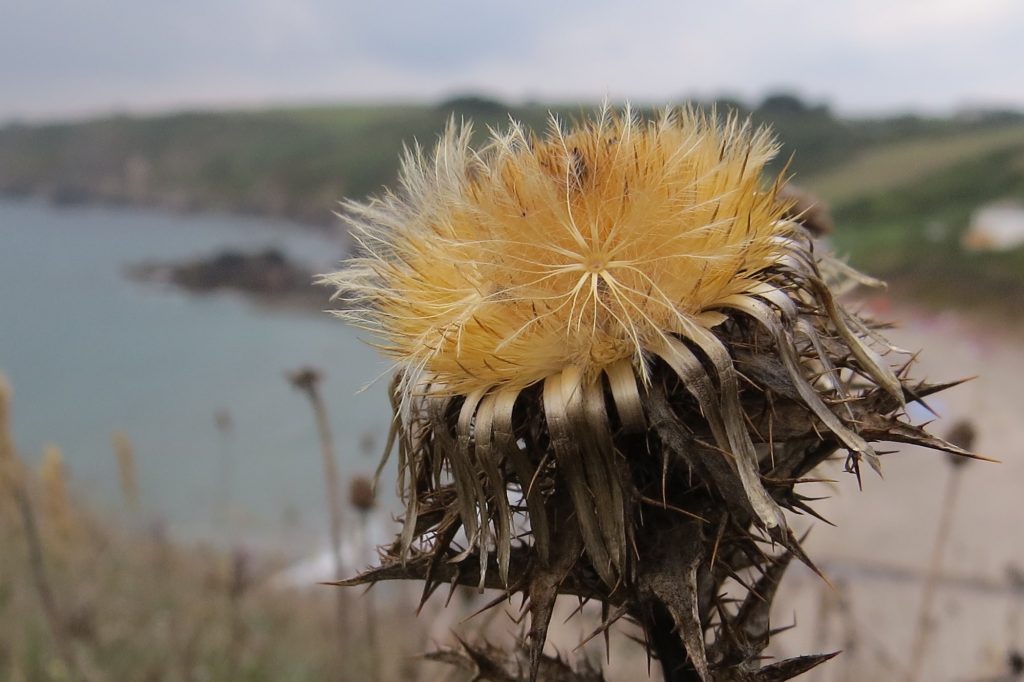
Late-flowering Carline Thistles bring a touch of gold to the early autumn landscape at Kennack Sands. The dry flowerheads persist through the winter.
Photo: Steve Townsend
Scientific name: Carlina vulgaris
Cornish name: Ascallan is the general Cornish word for a thistle.
What to look for:
• Family: Asteraceae (Daisy family).
• Flowers: In clusters or single, 3–4 cm wide, spiny outer green bracts, inner bracts are straw yellow-gold and spreading, florets a brown-golden colour.
• Leaves and stem: Spiny; oblong, spine-edged leaves, clasping the stem.
• Height: Up to 10 to 60 cm.
• Where: Calcareous grasslands.
• When: Flowers July to October.
• Habit: Biennial, upright.

Golden Carline Thistles sparkle along the cliff tops in late summer and early autumn. On sunny days, its bracts open out, only to close when the weather turns cooler and wetter. As autumn closes, the flowerheads dry out and last throughout the winter. Indeed, Carline Thistles look dried out and in seed even when in full bloom, owing to the brown tinge to the flowerheads.
More typically associated with calcareous grassland, the base-rich serpentine soils and shell-rich sands of The Lizard also form a good habitat for Carline Thistles.
How did this thistle get its name? Well, the story goes that an angel told the Emperor Charlemagne that it could be used to treat his soldiers, who were dying as a result of an outbreak of plague. We don’t know if it worked, but the Carlina thistle genus now bears a form of the famous leader’s name (from Charles in English/French, or Karl and Carlo in German and Italian, respectively).
Did you know…?
…Butterflies love the early-autumn nectar of Carline Thistles, including the recently reintroduced Large Blue.
…Some Carlina species are used in traditional herbal remedies, including in the treatment of skin conditions and toothache.

More information and references:
Bates, R. and Scolding, B., 2002. Wild Flowers of The Lizard. Cornwall County Council, Truro.
Mabey, R., 1997. Flora Britannica. Chatto & Windus, London.
Rose, F. and O’Reilly, C., 2006. The Wild Flower Key, 2nd edition. Frederick Warne, London.
Published: October 2018
Author: Amanda Scott
Photos: Upper and lower: Steve Townsend; middle: Amanda Scott
